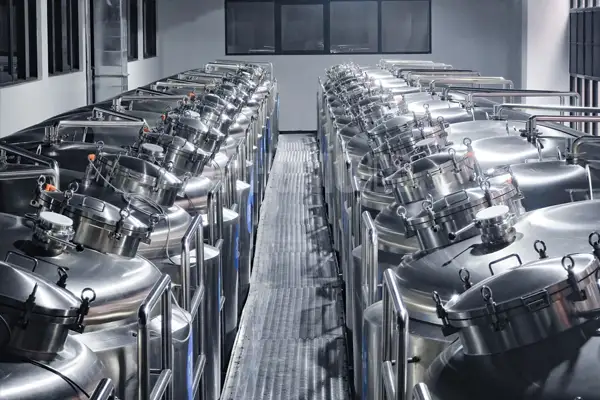Winery Chillers
Precision Glycol Cooling for Fermentation & Barrel Rooms
Industrial-grade glycol systems maintain ±0.3°C stability across wine production stages. Technical specs meet OIV/VINIFLHOR standards.
Winery Chiller System Overview
Operating Range: -5℃ to +10℃ (23°F to 50°F)
Coolant: Food-grade propylene glycol (30-40% concentration)
Key Components:
Twin screw compressors (15-200 TR capacity)
Corrosion-resistant plate heat exchangers (316L SS)
CIP-ready buffer tanks (500-10,000L)

Critical Cooling Applications
1. Primary Fermentation Control
| Parameter | Red Wine | White Wine |
|---|---|---|
| Temp Range | 25-30℃ (77-86°F) | 12-18℃ (54-64°F) |
| Cooling Rate | 2-3℃/hour | 1-1.5℃/hour |
Function: Manage exothermic reactions during yeast activity (Saccharomyces cerevisiae).
2. Malolactic Fermentation
- Temp Requirement: 18-20℃ (64-68°F)
- Glycol Flow: 0.5-1.5 m³/h per 10kL tank
Outcome: Precise control prevents volatile acidity >0.8 g/L (OIV limit).
3. Barrel Aging & Storage
deal Conditions: 12-16℃ (54-61°F) @ 70-80% RH System: Glycol-chilled jacketed tanks + humidity control
Energy Efficiency: 30% reduction vs. conventional HVAC (ASHRAE 2023 data).
Critical Cooling Applications
| Model | Compact (5TR) | Industrial (50TR+) |
|---|---|---|
| Cooling Capacity | 17.5 kW @ -5℃ | 175 kW @ -10℃ |
| Glycol Flow | 40-60 L/min | 400-600 L/min |
| Tank Configuration | Integrated 300L | External 5,000L + secondary pump |
| Certifications | NSF/ANSI 169 | CE PED 2014/68/EU |
Why Glycol vs. Direct Refrigeration?
- Temperature Stability: ±0.3℃ vs. ±2℃ fluctuations
- Sanitation: Full CIP capability reduces microbial risk by 60%
- Scalability: Modular design supports 5kL to 500kL operations
Industry Benchmark: 78% of Top 50 Global Wineries use glycol systems (Wine Business Monthly 2024).
